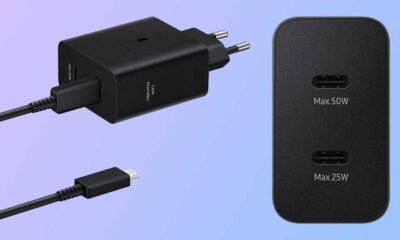Business
Samsung SDI to record heavy profit on EV battery business in Q2, 2021: Analyst
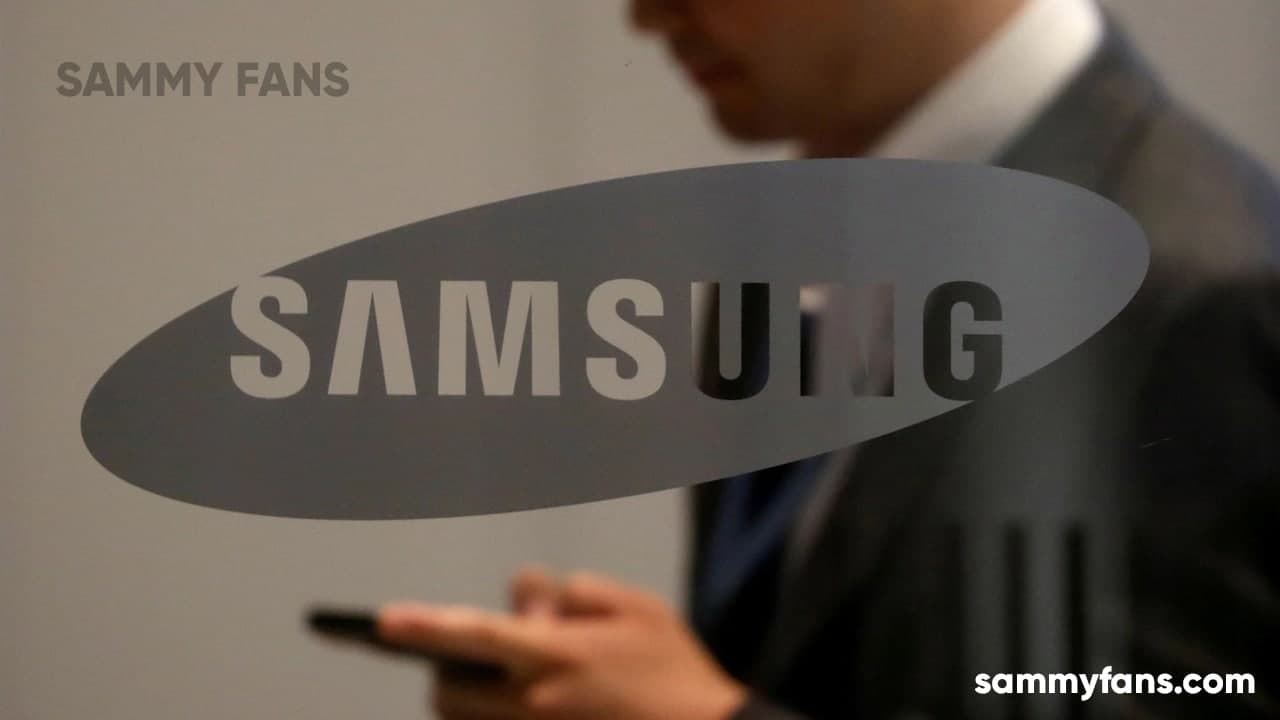
Recently, the Samsung SDI electric vehicle (EV) battery business is expected to have turned to operating profit for the first time in the second quarter on strong demand by global automakers.
Samsung SDI, the battery arm of Samsung, was predicted to have posted 3.4 trillion won ($3 billion) in sales and 252.7 billion won in operating profit in the April-June period, according to the data from 15 local brokerage houses compiled over the past month.
Samsung SDI’s medium and large-battery division, which makes batteries for EVs and energy storage systems (ESS), is expected to have swung to operating profit in the second quarter for the first time as it has clinched more deals from EV makers.
Join Sammy Fans on Telegram
The company supplies batteries to German automaker BMW, and its batteries are set to be used in US electric vehicle startup Rivian’s upcoming electric pickups and SUVs. In contrast, its bigger rival LG Energy Solution was expected to have logged sluggish earnings in the second quarter due to one-off costs for its ESS battery recall.
Last month, the subsidiary of LG Chem said it will voluntarily replace lithium-ion batteries used in ESS over potential fire risks, which is estimated to cost around 400 billion won.

Despite the ESS-related costs, analysts predicted LG Energy to book robust earnings this year as the firm will receive 2 trillion won in battery suit settlement money from its smaller rival SK Innovation.
SK Innovation a refinery-to-battery company, was projected to have posted upbeat sales in the April-June period thanks to a rebound in its mainstay petrochemical business and growing EV battery demand.
SK Innovation was forecast to have raised around 700-800 billion in revenue from its battery business in the second quarter, following 526.3 billion won in sales three months earlier. Analysts expected its battery division’s operating loss to narrow from 176.7 billion in the first quarter to around 100 billion won in the second quarter.
STAY CONNECTED WITH US:
- Like SammyFans.com on Facebook
- Follow SammyFans on Twitter
- Get the latest insights through Google News
- Send us tips at – [email protected]
Business
Samsung leads Q3 smartphone market, Huawei’s entry haunts Apple
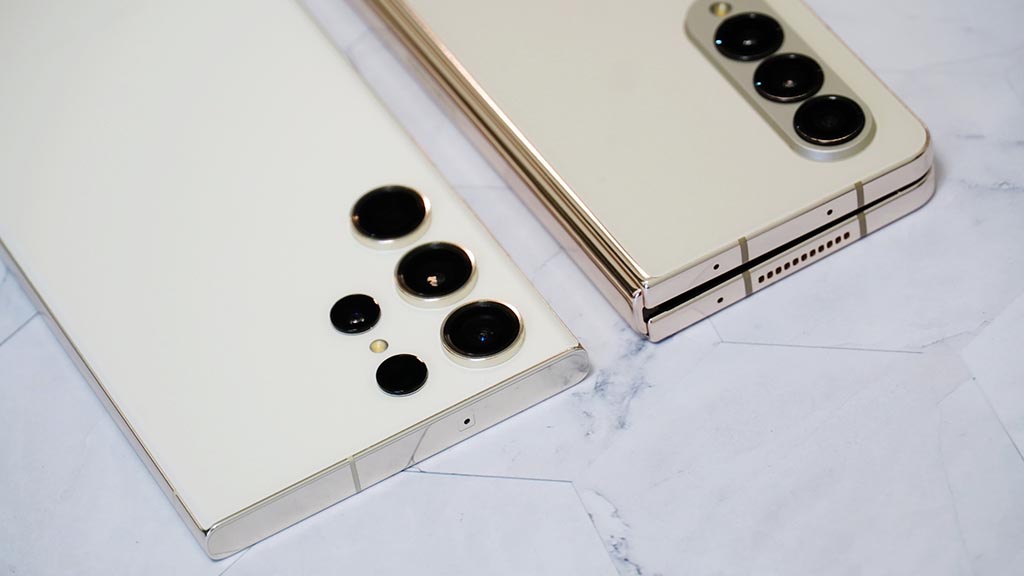
Samsung ranked first in market share in the global smartphone market in Q3, 2023. TrendForce report says that Samsung led the global Q3 smartphone market, recording a market share of 19.5%.
Overall production in the third quarter increased by 11.5% compared to the previous quarter to 60.1 million units. During the same period, Apple’s production increased by 17.9% to 49.5 million, thanks to iPhone 15.
Follow our socials → Google News | Telegram | X/Twitter | Facebook | WhatsApp
Third place was taken by Xiaomi (13.9%), followed by Oppo (12.6%) and Transion (8.6%). 6th place is Vivo (8%). Meanwhile, global smartphone production reached 308 million units, a 13% increase compared to the previous quarter and a 6.4% increase from the previous year.
Huawei’s re-entry into the flagship smartphone market targeting Apple has had a significant impact in China. Huawei is aiming to expand its high-end flagship series, focusing on the Chinese domestic market next year, so Apple “We plan to attack directly”.
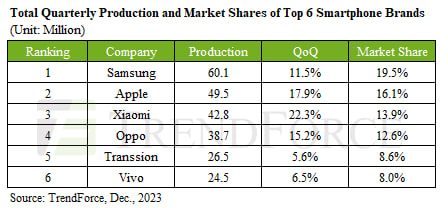
// Source
Business
Underdog phone brand jumped 50%, Samsung and Apple lost ground

In Q3 2023, Samsung and Apple’s market share slightly declined, while an underdog Chinese phone brand appeared on the top 5 chart. In a recent development, Canalys published market research data for the third quarter, revealing Tanssion as the fifth best-seller globally.
According to the info, Samsung and Apple lead total sales with 20% and 17% market share, yet both have fallen from their 22% and 18% levels in 2022. However, Tanssion, the maker of Tecno, Itel, and Infinix phones, climbed from 6% global market share last year to 9% in 2023, a 50% jump.
Follow our socials → Google News | Telegram | X/Twitter | Facebook | WhatsApp
Apart from this, Xiaomi matched last year’s share only by “recovering” from a terrible first half of 2023. At the same time, OPPO has fallen steadily over the past two years, while fellow BBK brand vivo lost the top-5 slot it’s owned for years.
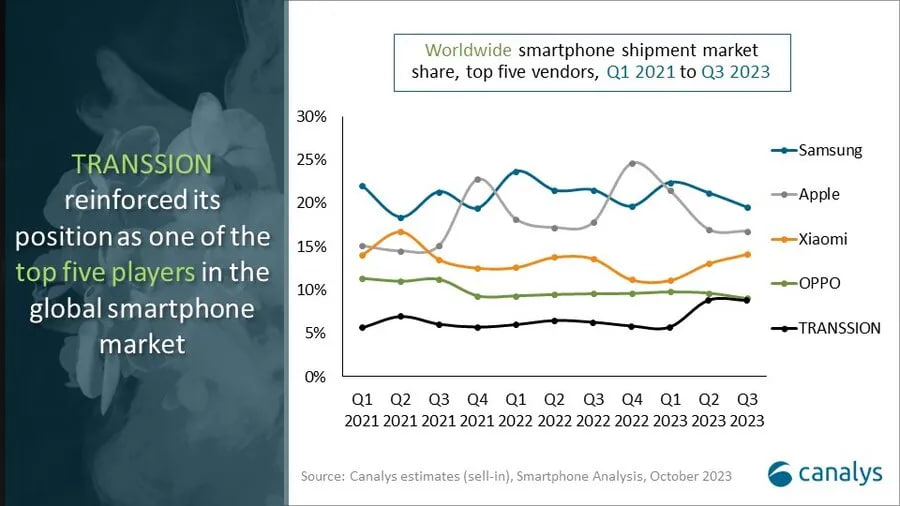
Overall, the global smartphone market underwent a slight drop of 1% in Q3 2023. Bolstered by regional recoveries and new product upgrade demand, the smartphone market recorded a double-digit sequential growth in Q3, ahead of the sales seasons.
Business
Samsung enjoyed 2023’s last victory over Apple?

Recently, research agency Counterpoint Research published their latest analysis. The report reveals that Samsung continued its leadership in the third quarter of 2023, while Apple remained in the second spot. However, both OEMs faced a decline of 1 percent year over year.
According to CR, slower consumer demand is the main factor in the dwindling sales. The market did see a slight 2 percent growth in Q3 compared to Q2, likely driven by last month’s iPhone 15 series launch. Samsung secured 20 percent market share, while Apple grabbed 16 percent sales.
Follow our socials → Google News | Telegram | X/Twitter | Facebook | WhatsApp
The Galaxy A-series was the key driver for the South Korean smartphone maker. Apple came in second with 16 percent of the market while Xiaomi rounded out the top three with its 12 percent share. Oppo (10 percent) and vivo (8 percent) were the remaining brands in the top five charts.

The newly released iPhone 15 series will help Apple score a lead over Samsung in the fourth quarter of the year. The results will arrive by early next year, and it’s expected that the US phone maker could surpass Samsung. Major camera upgrades and USB-C helped Apple register strong sales.







